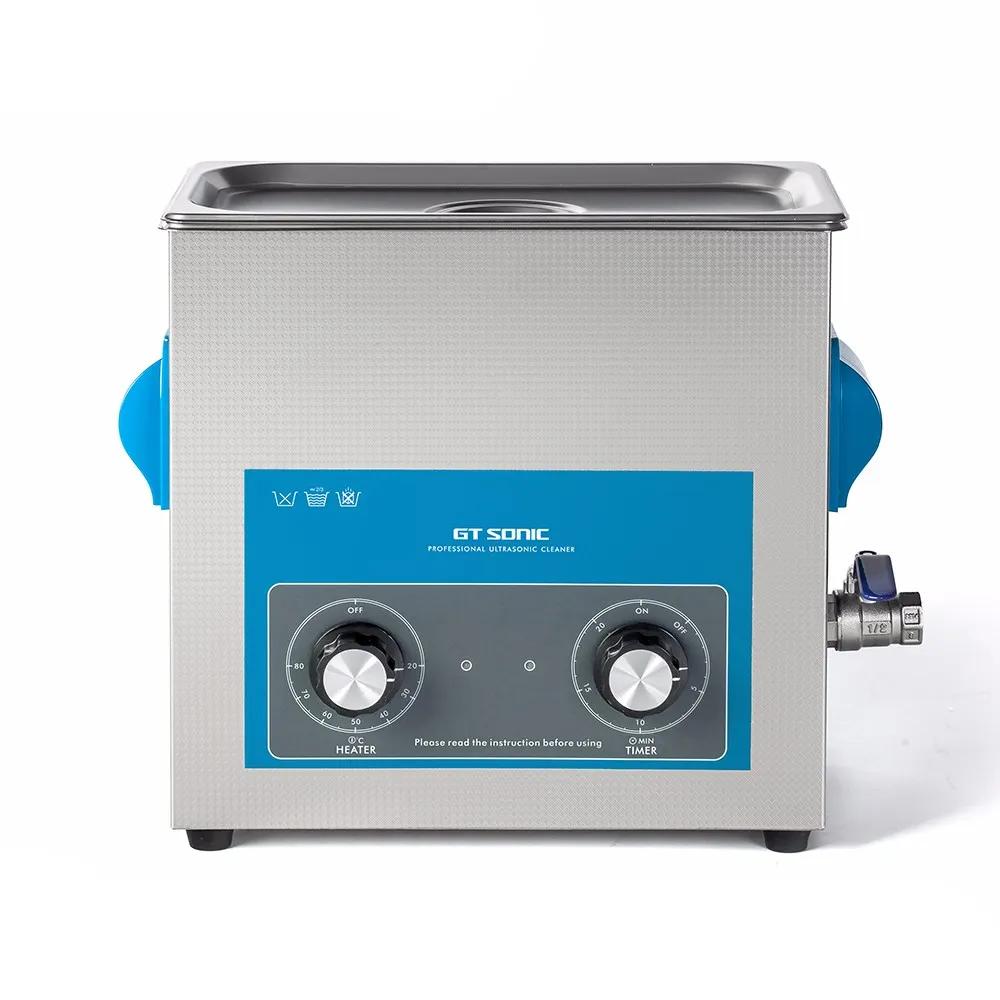
An ultrasonic cleaner utilizes mechanical vibrations to generate sound waves in a solution, causing microscopic implosions of bubbles and creating a vacuum-like scrubbing action through cavitation, effectively removing contaminants and dirt.
Cavitation is a physical phenomenon characterized by fluctuating high-pressure regions that oscillate rapidly. In an ultrasonic cleaning machine, this fluctuating pressure is induced by transmitting a high-frequency wave into the cleaning solution. This process forms tiny bubbles or voids that implode instantly, generating small yet powerful shockwaves. Although these shockwaves are invisible to the naked eye, at the microscopic level, they effectively chip away debris from the part undergoing cleaning.
Ultrasonic cleaning is a groundbreaking method that harnesses the power of sound waves to remove dirt and contaminants from various surfaces. Particularly effective for delicate, intricate, or detailed parts, ultrasonic cleaners provide a gentle yet thorough cleaning process without causing any damage. Whether you’re cleaning microchips, computer components, plated items, or intricate parts, these cleaners offer a superior solution. The process involves using sound waves to agitate the water, generating tiny bubbles that can reach even the smallest cracks and crevices, resulting in a deep and comprehensive clean. Fast, efficient, and applicable to almost any surface, ultrasonic cleaning provides a reliable alternative to abrasive scrubbing or high-pressure sprays.
Ultra sonic cleaning machine in UAE utilizes high-frequency sound waves to remove contaminants and dirt from various objects and surfaces. The process involves immersing the items to be cleaned in a tank of liquid, typically water or a specialized cleaning solution, and then subjecting them to ultrasonic waves. These waves create microscopic bubbles through a phenomenon known as cavitation. When these bubbles collapse, they produce tiny shock waves that remove debris and contaminants from the surfaces of the immersed items.
Ultrasonic cleaners are safe for families because they don’t release harmful chemicals. Unlike other cleaning methods that may produce fumes, ultrasonic cleaners use water and air to remove dirt, posing very low health risks. They effectively eliminate bacteria, mold, and germs from various surfaces, making your home safe for children. Ideal for cleaning multiple areas like windows, floors, kitchen counters, and outdoor play equipment, ultrasonic cleaners leave no residue or harmful chemicals behind, ensuring the safety of both pets and young children.
Ultrasonic cleaning combines spray and immersion washing. When your parts are immersed, the washer’s transducers generate sound waves throughout the machine. Simultaneously, water jets are directed toward your component. The sound waves produce bubbles in the jetted water, which burst against the part’s surface, loosening debris. The dual action, with jets blasting, removes the loosened debris effectively.
Ultrasonic cleaners are versatile and can clean metals, glass, rubber, ceramics, and hard plastics effectively. However, it’s crucial to use them with care to avoid potential issues. The jetting action may cause erosion and pitting, especially with prolonged exposure. Additionally, resonance from sound waves can harm parts. To address this, you can adjust the energy density to control bubble size, limit the time of use, or combine ultrasonic cleaning with other methods in a multi-stage washer for optimal results.
Benefits of ultrasonic cleaning include:
- Thorough Cleaning: Ultrasonic cleaning reaches areas that may be challenging to clean using traditional methods, such as intricate parts, fine details, and tight spaces.
- Gentle Process: It is a non-abrasive and non-destructive cleaning method, making it suitable for delicate items and materials.
- Time Efficiency: Ultrasonic cleaning is generally faster than manual cleaning methods, increasing efficiency in industrial applications.
- Reduced Labor: The process is automated, reducing the need for extensive manual labor.
- Versatility: It can be used for cleaning a wide range of items, including jewelry, medical instruments, electronic components, and industrial parts.
- Environmentally Friendly: Ultrasonic cleaning often requires less use of harsh chemicals compared to traditional cleaning methods, making it environmentally friendly.
- Consistent Results: The process provides consistent and repeatable cleaning results, ensuring a high level of cleanliness.
- Removal of Stubborn Contaminants: Ultrasonic cleaning can effectively remove contaminants such as grease, oils, dirt, and oxidation from surfaces.
When selecting an ultrasonic cleaning solution, it’s essential to consider the industry and the specific components you intend to clean. Many manufacturers offer all-purpose detergents compatible with various ultrasonic cleaners. The key is to ensure that the chosen detergent aligns with the composition and structure of the items you plan to clean. Like any cleaning solution, it’s crucial to read the guidelines and understand the chemical makeup of the detergent before making a selection.
Ultrasonic cleaning utilizes cavitation induced by alternating compression and rarefaction cycles at ultrasonic frequencies to remove contaminants from a part’s surface. Cavitation imparts vibrations through implosions or oscillations of tiny cavities or voids.
An ultrasonic transducer converts energy, typically electrical or mechanical, into ultrasonic vibrations. The two primary types are piezoelectric and magneto strictive transducers. The ultrasonic generator, a key component, receives power and transforms it to energize the transducer at the desired frequency. Other parts include the tank, basket, and electrical heaters. Several factors impact cleaning efficiency, such as chemical solution properties, bath temperature, solution chemistry, dissolved gasses, frequency, and power. There are three main types of ultrasonic cleaning machines based on construction: single-tank, multiple-tank, and immersible ultrasonic cleaners.
To learn more about How to Choose a Laser Cleaning Machine for Rust Removal in UAE?
